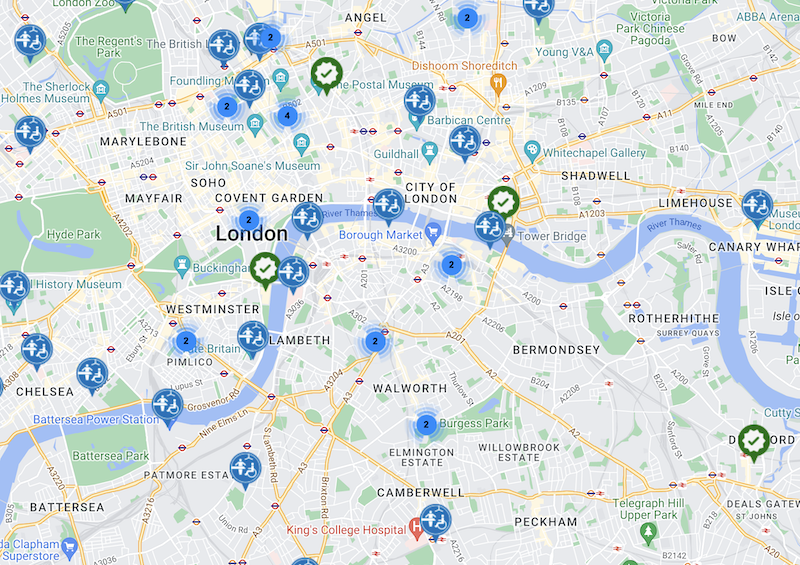Post
Accessible toilets: How aware are public buildings of their legal obligations?
20 Apr 2024
There are now more than 1,400 Changing Places Toilets (CPT) in the UK, up from just 140 in 2007. But more are needed to support over a quarter of a million people who need them in the UK.
Changing Places toilets are larger, accessible toilets, suitable for severely disabled people, with equipment such as hoists, curtains, adult-sized changing benches and space for carers.
Check out our rundown of upcoming events
The government estimates it will add the toilets to more than 150 new buildings a year. A £30 million fund to install Changing Places in existing buildings will open in the next few months.
A consortium of charitable organisations such as Muscular Dystrophy UK, Age UK and the Disability Alliance have been campaigning for greater access to Changing Places since 2006.
The London Society put some questions to Tom Hulbert, managing director at healthcare equipment provider Innova Care Concepts on the work they are doing in public spaces.
Have the number of standard toilets been reduced to accommodate the CPT provision?
Hopefully this is additional provision rather than replacement. Under the rules and regulations set out under the British Standard BS8300:2018, a Changing Places toilet should always be installed in addition to existing toileting facilities. We’ve supported the National Portrait Gallery to enhance their current facilities with the addition of a Changing Places, helping provide an accessible toilet that meets different care requirements.
Not all disability is visible and far from all disability requires facilities such as the hoist. Does the new toilet provide for people wearing adult nappies? Colostomy bags?
Changing Places aim to be usable for people with a wide range of disabilities rather than just being accessible for wheelchair users. They include a range of equipment that make going to the toilet safer and more comfortable. From overhead hoist systems to fixed vertical grabrails and a colostomy bag shelf, a Changing Places has been designed to be suitable for different care requirements.
What effort went into consideration of the range of disabilities?
Changing Places are designed so that they are completely accessible and provide sufficient space and equipment for people who are not able to use the toilet independently. For instance, Changing Places must be three metres by four metres as the recommended minimum, with a ceiling height of at least 2.4 metres. This is to ensure they give enough space for someone with a wheelchair and space for a carer to support them. Other considerations include having a hoist, either ceiling or wall mounted, that provides full room coverage to enable users access between a changing bench, wash basin and toilet. Every item included in a Changing Places meets a set guideline that ensures the layout and equipment make using the toilet as safe and comfortable as possible for people with different disabilities.
Do CPT toilets receive government funding support?
In 2021, the Government announced a £30m funding programme for Changing Places, helping local authorities to install more than 500 new accessible toilet facilities in their local community. This three-year programme had a deadline of the end of March 2024, where local authorities must have their allocated funded projects signed off and completed. As an approved Changing Places supplier, Innova have helped install a number of these funded Changing Places, including for Bolton Library earlier this year. To help those local authorities who have been struggling to meet funding deadlines, we have put solutions in place such as having modular Changing Places in stock to speed up installation and delivery.
What do you think needs to be done to encourage public buildings to have CPT toilets?
A continued push to educate and spread awareness of the importance of Changing Places, both in terms of how they help people with complex disabilities, but also making public buildings aware of their obligations regarding the latest building regulations. The difficulties those with complex disabilities face when trying to visit their local tourist attraction or public building are often overlooked. We need to showcase the success stories of how Changing Places are enhancing lives, giving confidence and opportunities for more people to have the freedom to access local facilities.
How much does it cost to install a CPT?
Prices for Changing Places installations can vary depending on whether it is needed for an internal or external space, the specification of the equipment you choose, as well as any additional structural work that may be required to incorporate a facility into an existing building. A standard internal Changing Places can cost between £15k to £20k whilst modular buildings start from around £50k.

